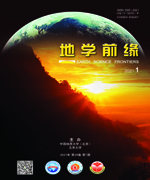Source supply not only affected the distribution characteristics of the 1st Member of Shahejie Formation, Lixian Slope, Raoyang Sag, Jizhong Depression, but also controlled the sedimentary type and facies distribution, which in turn controlled the development of favorable hydrocarbon reservoirs. In order to clarify the sedimentary provenance of the Lixian Slope to support further research on the sedimentary system and oilfield exploration, we carried out a comprehensive analysis of sedimentary provenance based on 3D seismic data, petrological characteristics, heavy mineral compositions as well as the ZTR index, detrital zircon geochronology and morphology of the Paleogene Shahejie Formation. The results are summarized below. (1) Progradational seismic reflections were mapped downlapping in the northern, western and southwestern parts of the slope, and the composition maturity and ZTR indices of clastic rocks increased toward southeast, east and northeast, respectively, indicating water systems carrying material sources were injected, into the northern, western and southwestern parts of the slope, respectively. (2) According to the component characteristics of lithics and heavy minerals, the Lixian Slope can be divided into three regions A, B and C. Strata in region A resemble basement uplift or dissected arc in terms of component characteristics, and contain recycled orogenic elements; the components of lithic and heavy mineral assemblages are igneous and sedimentary rocks and garnet-zircon-magnetite-hematite, respectively. In regions B and C, strata resemble basement uplift. In region B, lithification resulted in magmatic and sedimentary rocks with small amount of metamorphic rock, and heavy minerals are garnet and zircon. Region C featured igneous/sedimentary/metamorphic rock combination in lithic rock fragments, and heavy minerals are garnet, zircon and ilmenite. Sedimentary deposition on the slope was controlled by the water systems injected from the north, west, and southwest and converging in the Xiliu area. (3) The morphology and geochronology of detrital zircons showed that the Taihangshang uplift was the parent rock area corresponding to each provenance in the survey area. The rivers carrying the northern, western and sourthwestern provenances mainly flew through the Wutai-Xinzhou-Laiyuan, Fanshi-Laiyuan-Fuping and Wutai-Fuping-Dingzhou areas, respectively, and the parent rocks they carried were mainly Proterozoic and Paleozoic, Paleozoic and Proterozoic and Paleozoic magmatic rocks, respectively. Compared with the 2nd Member of the Shahejie Formation, the capacity of the western provenance in the 1st Member was significantly enhanced while that of the southwestern provenance relatively decreased. (4) The shallow-water delta deposition systems formed after the water system injection, with the tendency of stronger provenance supply thus better sand-body development closer to the source.

